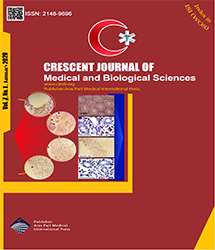| Original Article | |
| The Effects of Spatial Auditory Training on Speech Perception in Noise in the Elderly | |
| Yones Lotf1, Zhaleh Samadi-Qaleh-Juqy1, Abdollah Moosavi2, Hamed Sadjedi3, Enayatollah Bakhshi4 | |
| 1Department of Audiology, University of Social Welfare and Rehabilitation Sciences, Tehran, Iran 2Department of Otolaryngology, School of Medicine, Iran University of Medical Sciences, Tehran, Iran 3Department of Electrical Engineering, Shahed University, Tehran, Iran 4Department of Biostatistics, University of Social Welfare and Rehabilitation Sciences, Tehran, Iran |
|
|
CJMB 2020; 7: 40–46 Viewed : 5527 times Downloaded : 3930 times. Keywords : Aging, Auditory training, Speech perception |
|
| Full Text(PDF) | Related Articles | |
| Abstract | |
Objectives: Studies have shown that spatial processing disorders can be the reason for hearing impairment in the elderly but none of the auditory training programs has addressed it. This study investigated the effect of a novel auditory training on speech perception in noise among the elderly and its maintenance. Materials and Methods: The spatial versions of the Persian quick speech in noise (QuickSIN) test were developed and its face validity and reliability were evaluated. Thirty-six old subjects with normal hearing ability who expressed problem in speech perception were randomly divided into the study and control groups. The study group received 5 weeks of spatial auditory training. The spatial versions of the QuickSIN test, and Iranian version of the speech, spatial, and qualities of hearing scale (SSQ), as well as the middle latency response (MLR) test were done pre and post training. The same evaluations were carried out for the control group without training. Results: Test-retest reliability and face validity of the spatial versions of Persian QuickSIN test were confrmed. Signal to noise ratio for 50% correct score (SNR50) signifcantly decreased and spatial release from masking (SRM) and binaural interaction component of MLR percentage (BIC-MLR%) signifcantly increased. The average scores of SSQ improved in all the three domains. These changes, except for BIC-MLR and SNR50a had short-term maintenance. Conclusions: Spatial auditory training can improve speech perception in noise by enhancing the representation of binaural cues at the thalamocortical level. Spatial hearing evaluation and training are recommended to be incorporated into audiology services for serving the geriatric population. |
Cite By, Google Scholar
Google Scholar
PubMed
Online Submission System
 CJMB ENDNOTE ® Style
CJMB ENDNOTE ® Style
 Tutorials
Tutorials
 Publication Charge
Medical and Biological Research Center
About Journal
Publication Charge
Medical and Biological Research Center
About Journal
Aras Part Medical International Press Editor-in-Chief
Arash Khaki
Deputy Editor
Zafer Akan


















